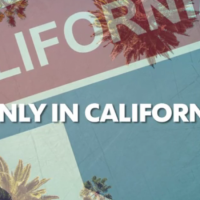The reports cite a variety of factors behind the revenue slowdowns, from falling commodity prices to the rising costs of government services. Some of the slowdown also likely comes from wealthy taxpayers and corporations, which have delayed some tax payments until next year in hopes that tax reform proposals will pass Congress.
Thirty-three states will miss revenue projections in Fiscal Year 2017, according to the National Association of State Budget Officers. That’s the highest number of states to miss revenue targets since 2010, during the middle of the recession, when 36 states missed projections.
In total, states anticipate revenues falling short by $12 billion. Most of the shortfall comes from sales tax collections, which are projected to be down $6.6 billion. That troubles some economists because sales taxes are traditionally the most stable revenue sources for states.
State corporate income tax collections are running about $2.8 billion, or 5.7 percent, below projections. Personal income tax collections are down $2.7 billion, 0.8 percent, and preliminary reports from April suggest those numbers are likely to continue to decline.
Analysts say that’s a sign high-income earners are deferring tax payments in anticipation of federal tax reform.
Almost half the states, 23, made mid-year budget cuts in Fiscal Year 2017, NASBO reported. That number has grown in recent years, from eight states in 2014 to 14 in 2016 and 19 and 2016.
The number of states making mid-year budget cuts tends to rise in advance of a recession.
Twenty-two states reported addressing or planning to address mid-year budget shortfalls, according to another report issued by the National Conference of State Legislatures. Another 20 anticipate revenue shortfalls next year.
Some states reported possible tax shortfalls due to falling commodity prices. South Dakota has seen its agricultural sector slow, while Wyoming has been hit hard by tumbling natural gas and coal prices. Alaska would face a $2.9 billion shortfall this year, and a $2.7 billion shortfall next year, if oil prices stay where they are.
Connecticut has seen debt and pension costs soar. Other states, like Nevada and Colorado, have been required to spend much more than anticipated on K-12 education as their populations boom.
“Many states describe their fiscal situation as stable in the near term, but slow revenue growth could lead to more fiscal challenges in the future, especially if there is a downturn in the national economy. Demographic changes, low energy prices, and a sluggish agricultural economy are also plaguing some state budgets,” the NCSL report’s authors wrote.
A third report from Rockefeller Institute of Government budget analysts Lucy Dadayan and Donald Boyd finds state and local tax revenue grew at a 2.3 percent rate in the fourth quarter of 2016, a rate slower than the average rate over the previous four quarters. Both the current growth rate and the average growth rate are well below historical norms.
State tax rates grew by just 1.4 percent in the fourth quarter, far below the average annual growth rates before the great recession. Tax collections declined in 19 states in the fourth quarter, ranging from energy-producing giants like North Dakota and Wyoming to states with much more diverse economies, like California and Texas.
Part of that comes from lower gas prices, which impacts state gas tax collections.
“Consumers have been tightening their wallets,” Dadayan and Boyd wrote.
Like mid-year budget cuts, tax revenue declines have been tied to economic recessions. State tax revenue from major sources, like property, income and sales taxes, dipped 0.9 percent over the last year when adjusted for inflation, the Rockefeller report found. The last three times revenues dipped preceded economic recessions in 1991, 2002 and 2008.
Many states are already planning for tighter times ahead. NASBO reports that governors have proposed budgets that increase general fund spending by just 1 percent next year, well below historical growth rates.
“Coming out of two consecutive years of widespread weakness in tax collections, states are approaching fiscal 2018 with caution,” the NASBO report says. “Looking ahead, budget conditions are likely to remain tight as states contend with rising spending demands for pensions, health care, and other fixed costs, modest revenue growth, and federal uncertainty.”
(First reported by The Hill) http://thehill.com/homenews/state-watch/337776-ominous-signs-for-states-as-revenue-targets-missed (June 15, 2017)
Want more BFT? Leave us a voicemail on our page or follow us on Twitter @BFT_Podcast and Facebook @BluntForceTruthPodcast. We want to hear from you! There’s no better place to get the #BluntForceTruth.
Want more BFT? Leave us a voicemail on our page or follow us on Twitter @BFT_Podcast and Facebook @BluntForceTruthPodcast. We want to hear from you! There’s no better place to get the #BluntForceTruth.








